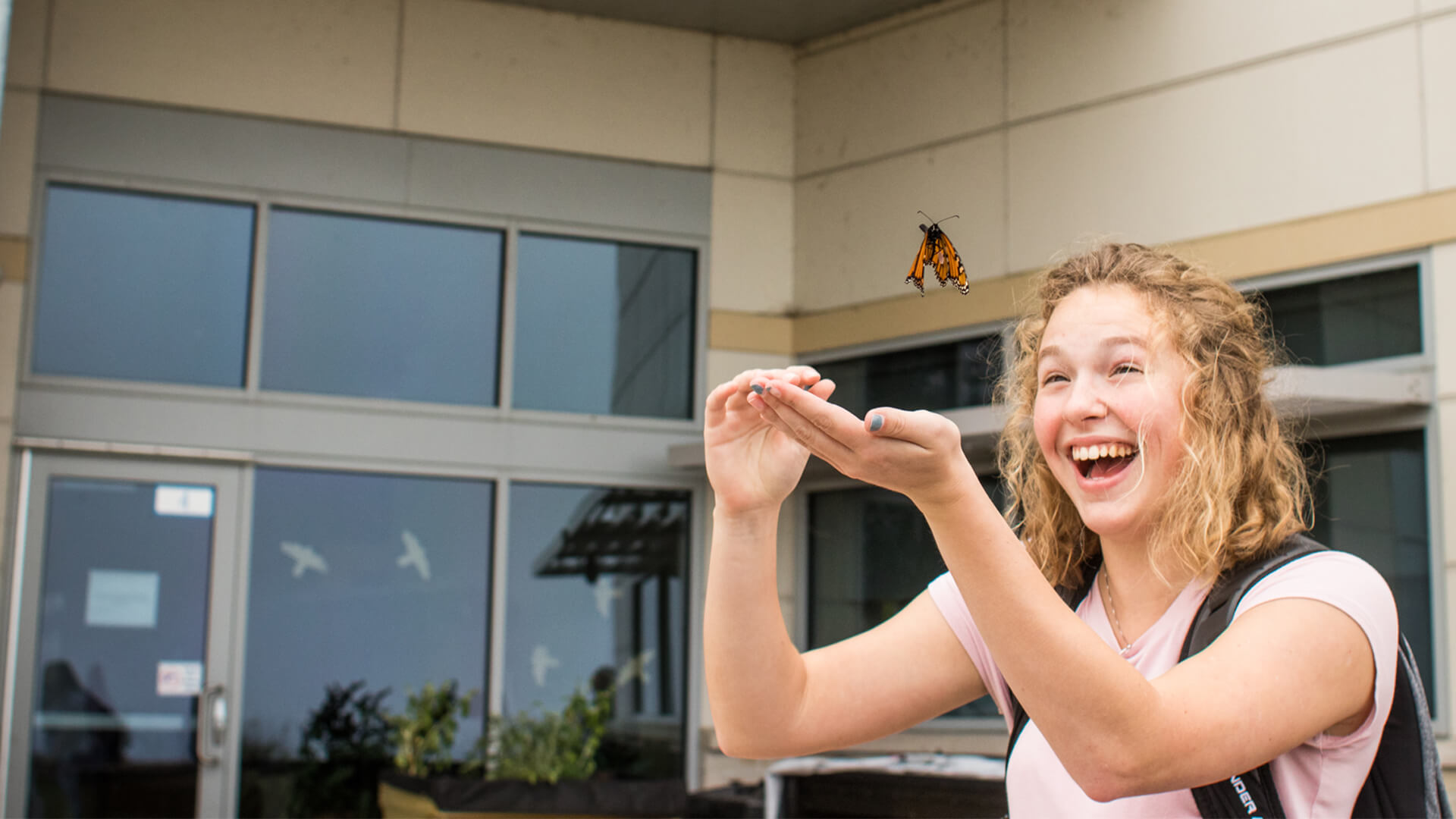
One of the least understood biological phenomena in the world is taking place right now, as several hundred millions monarchs have begun a nearly 2,500 mile trek to the mountainous valleys of central Mexico from Wisconsin and other parts of the Midwest and Canada.
Concordia University’s 75-foot high bluff and prevailing northwest winds are the perfect storm for a migratory pathway for this “super generation” of monarchs, which have larger bodies and wings than their non-migrating cousins. Migration can take several months to reach 12 mountainous areas in the states of Mexico and Michoacan, where they take up residence from late October to late March.
Super monarchs can live upwards of nine months, while non-migrating monarchs live approximately four weeks. Once they arrive in Mexico, super monarchs cluster together to stay warm on a single Oyamel tree by the tens of thousands. They survive for weeks on stored fat and only stir themselves on sunny days to seek water before they journey north in the spring.
To help understand nature’s great spectacle of hibernation, longtime professor Dr. Philip Arnholt and several members of his botany class began to capture and tag the delicate wings of the colorful butterflies earlier this week near the Concordia Center for Environmental Stewardship (CCES). Joining them were 13 homeschooled students taught by Dinese Farrington, CCES Environmental Education Outreach Coordinator. After using butterfly nets to capture them and identifying whether the monarch was wild or raised, a small tag the size of a pea was placed on its outside left wing before release.


Arnholt, the lone Concordia tenured professor, has been studying and tracking monarchs on the bluff for nearly 20 years. “These lightweight tags enable scientists to assess the monarch’s direction, as well as their speed and the possible effects of the weather,” said Arnholt. The distance record for a single monarch eclipsed 4,000 miles, when a butterfly was located in southern Texas the spring after it was tagged and recorded. While September is customarily prime time for migration, Arnholt spotted a lone monarch as late as November 19 one year.
Female monarchs require milkweed plants to lay their eggs, but unfortunately milkweed has dwindled in recent years due in part to the overuse of herbicides, the loss of open land in the United States, and noxious weeds such as garlic mustard that choke the plants out. “We’ve made it a priority to plant more milkweed in our gardens at the environmental center,” Arnholt noted.Wildflowers as a food source remain plentiful along the half-mile bluff, which was totally rebuilt back in 2007 as part of the Renewed by the Waters capital campaign.
This year’s late start to the migration could mean a number of the popular orange and black butterflies will be spotted along the bluff well into October.
For more details on any of Concordia’s 71 undergraduate, 39 masters or four doctoral programs, or a myriad of online or accelerated adult education offerings, visit www.cuw.edu.
— This story is written by Kali Thiel. Kali was Director of University Communications until April, 2025.
If this story has inspired you, why not explore how you can help further Concordia's mission through giving.